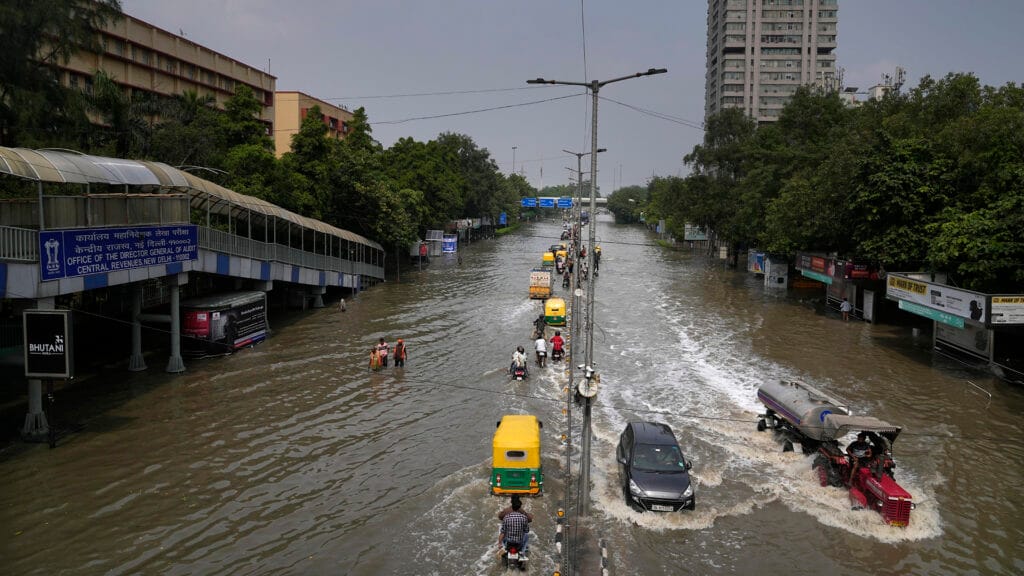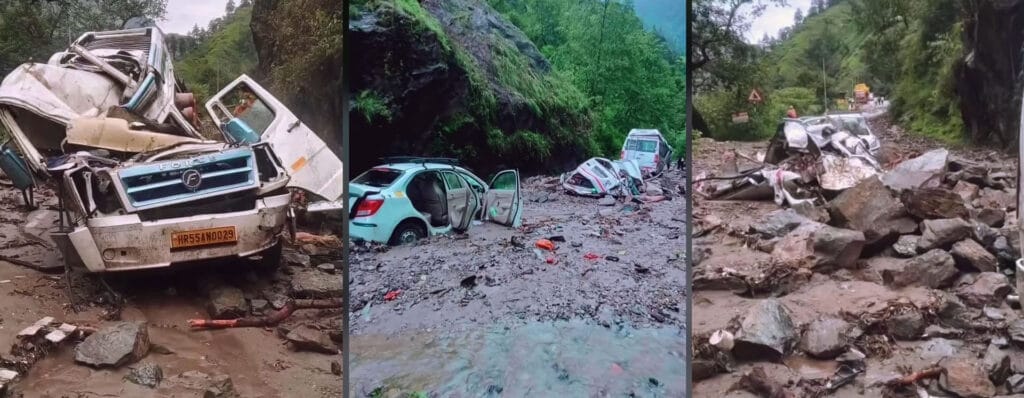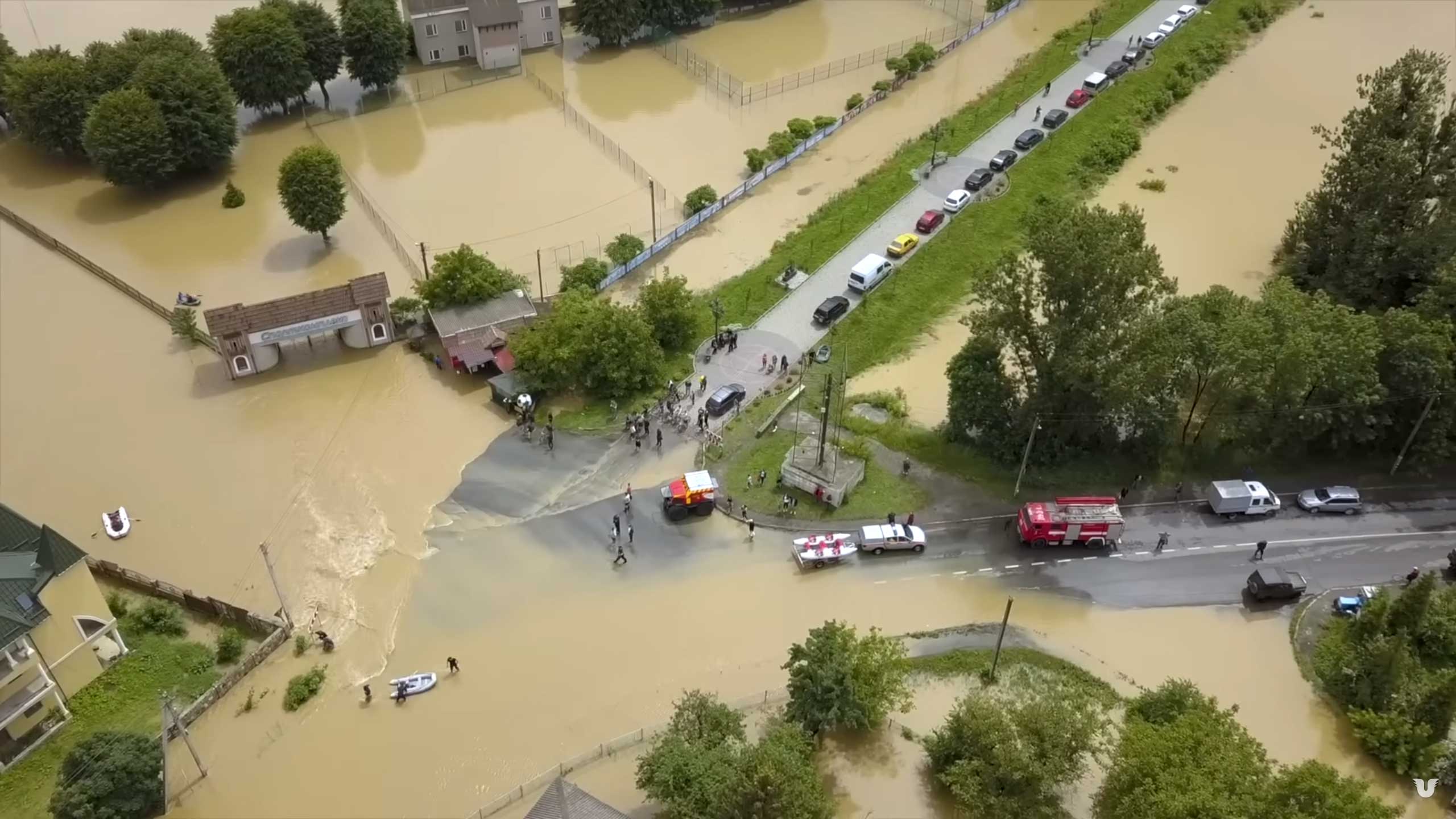The Reckoning: Are we really ready?
Context: The Environmental, Societal and Health Challenge
‘Incessant rains trigger devastation in north India, more fatalities reported’, ‘India floods: monsoon rains leave 22 dead in north as Delhi sees wettest July day in decades’, ‘41 more lives lost in unrelenting rain in north, flood fury in states’, ‘Monsoon mayhem claims over 60 lives in north India, flooding continue across Himachal, U.P., Delhi, Uttarakhand, Punjab’. These were news headlines, continuously being displayed in front of our eyes, through newspapers, news channels on TV and all over the internet as well. There was also the following report along with all the above ones, ’12 states battle rain deficit despite flood fury in north India’. These combating and contradictory reports and weather events warrant some thought on our part.

Northern India has faced extremely heavy rainfall for the past few days, especially affecting the hill states of Himachal Pradesh and Uttarakhand, and others such as Punjab, Haryana, some parts of Rajasthan and even the capital of Delhi. The scientific explanation for this extreme weather event is the formation of a low-pressure area above the region, where two systems have converged- a western disturbance coming from the Arabian Sea and the monsoon clouds coming from the Bay of Bengal. This is an extremely rare event and has led to incessant rainfall, affecting the lives of millions of people and resulting in multiple casualties. It has also resulted in massive flooding in the low-lying areas around the flood plains of the rivers and the valleys of the mountains along with many landslides as well (special attention should be paid to Joshimath in Uttarakhand where the land is already sliding slowing, resulting in massive cracks in the land surface and people’s houses).
Apart from the scientific explanation for this devastation, what is yet to be established is the role of climate change in this. Has climate change contributed to its severity? Or would it have been just as severe, if the average temperatures around the globe were not 1oC warmer than the pre-industrialization times? What are the measures that can be taken in the face of such extreme events, focusing on the solutions both in the short term as well as the long term?
Rainfall in July is a common thing to experience for many living in the capital city of Delhi. Occasional heavy rainfall? Sure, we have seen that as well. But this year’s phenomenon, spanning the weekend of 8th and 9th July tops all that has been experienced before. 153mm of rain fell over those days, leading the roads of Delhi to become more of rivers with all of the waterlogging. Our infrastructure and drainage system could barely handle the rains that we experienced before, and this one was much more severe than the others. There were massive traffic jams due to this heavy rainfall. Many areas such as Connaught Place, Greater Kailash and even parts of the Outer Ring Road were barely recognizable and certainly not safe to travel in.

Massive sink holes also appeared in the middle of the roads. Ironically the rain water also accumulated and flooded some of the houses of MPs and other politicians, whose mansions are in the Connaught Place and Khan Market areas. In our colony in Chittaranjan Park, four massive trees fell and it took them three days to clear everything out. All of the heavy downpour increased the levels of the Yamuna River flowing near Old Delhi. Further north, in the state of Himachal Pradesh, valleys of Kullu and others experienced flashfloods and hill stations like Manali experienced massive landslide. The Beas River which flows through the state was in-spate, the current so strong that it destroyed everything that came in its path. 61 lives were lost due to this extreme weather event.
Now the low-lying areas of Delhi and especially all the colonies which have been developed on the floodplains of the Yamuna River are experiencing massive flooding from the overflowing river, not because of the rain that has happened here as it has hardly rained for the past 4-5 days, but because of all the heavy rainfall taking place upstream in Himachal Pradesh and Uttarakhand. And it is not only the flooding which poses a threat to the people living in those areas, it is also the aftermath which is extremely concerning as well, with the threats of water and mosquito borne diseases looming large and affecting the health of the people. Dead animals, rodents and reptiles such as snakes are also being discovered in the flooded areas. This is extremely dangerous and hazardous to public health.
Concept: The Underlying Science and Engineering
To solve these issues and how the events came to the severity that they had, one must reconstruct the disaster and analyze some crucial parameters and patterns, to especially learn if climate change had a hand in increasing the severity of this. Only then can we learn from our experiences and that of others to come up with some realistic solutions.
Friederike Otto, a researcher and climatologist at University of Oxford, has emphasized the following about reconstruction of floods in her book called Angry Weather, something which I find very relevant as we are in the midst of a similar disaster ourselves, here in India;
“…it’s not that easy to reconstruct an event. When it comes to floods, it is often not immediately clear where we should look at rainfall data. When floodwater breaches riverbanks, we first need to determine where the rain has actually fallen: did it fall where the flooding occurred, or farther upstream? Was the rain actually heavy, or has someone simply failed to build a dam correctly? Or has the river been straightened, meaning that floodplains cannot prevent entire settlements from flooding? Was the entire season wet? Or was there an exceptional downpour on a particular day?”
On reflecting back on these questions, I realize that the unique situation that we face in Delhi is a combination of a little bit of all these factors. The waterlogging that we initially faced was because of the heavy downpour here at the location and a drainage system that was not able to handle such pressure. But the floods being experienced in the low-lying areas now are not due to the rainfall that happened here, although it did raise the levels of River Yamuna somewhat. The main reason is the heavy rainfall upstream, resulting in increased water levels at the Hathnikund Barrage in Haryana. There is no reservoir there to hold the water so they had to open the floodgates and let the water out, thus resulting in the fast increase of water levels here. This has led to massive flooding in the areas near the Yamuna River in Delhi, with all the uncontrolled and unscientific development carried out in the floodplains also playing a major part as the floodplain system cannot function properly in preventing floods anymore. These can be considered through models in attribution science, where extreme weather events and measurements and patterns are analyzed to see what effect climate change has had on it.
All of these factors have contributed to the problems that we see and feel today. The slow actions of bureaucracy, the politics over the most troublesome situations and lack of proper planning, coordination and disaster management actions have increased the pain of the people.
Potential Solutions and Conclusion
The solutions to these problems are often there, but the will to implement them is not, and warnings are often ignored as well. Uncontrolled, unsustainable development has played a large part in creating the problems that we face today in the form of effects of climate change. Nature and its resources have been exploited to such an extent that it has started to hit back at us. We have to take corrective measures to prevent such devastation through flooding, landslides and other disasters and manage the situation in the short-term and lower our greenhouse gas emissions and aim for zero-carbon emissions in the long run.
Some suggestions for possible solutions could be better infrastructure, robust drainage systems of higher capacity, prevention of further unscientific development on the floodplains to better control the flooding and a proper, coordinated system of dikes and some levees could also work to prevent flooding—the engineering innovation of the Netherlands which lies below the sea level! The situation that we face now in north India may just be a trailer to something much more severe in the future. When we see all this suffering and devastation caused by the floods around us, we must ask ourselves: Are we really ready for the ‘Hour of Reckoning’, if not what is the choice?
***






